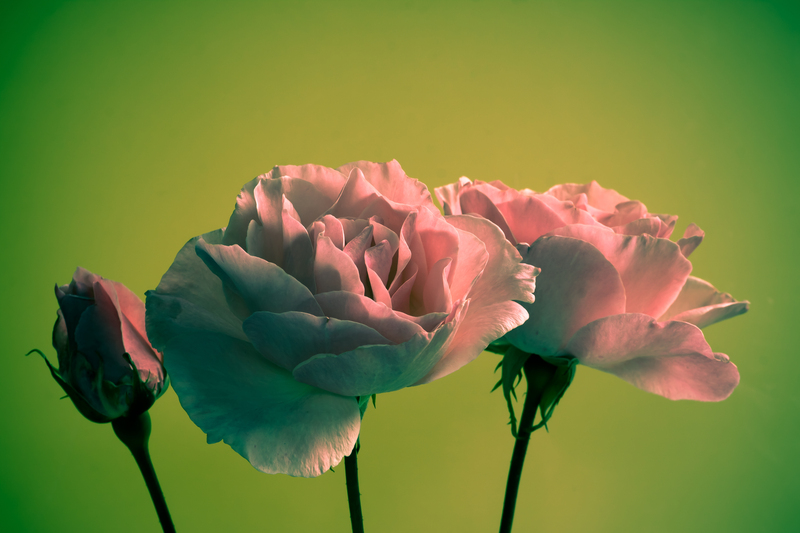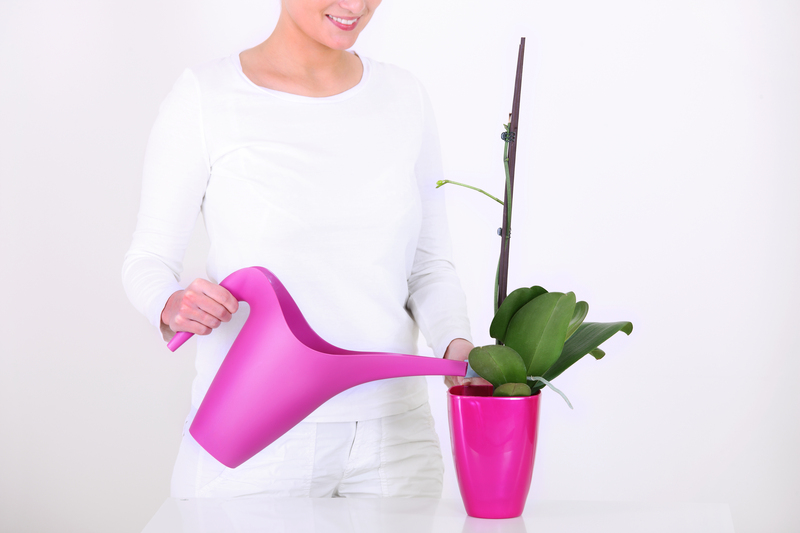Reimagining Your Green Space with Container Gardening
Posted on 31/08/2025
Reimagining Your Green Space with Container Gardening
Container gardening is transforming landscapes and urban living spaces around the globe. Whether you have a sprawling backyard or a compact city balcony, container gardening offers a flexible, creative way to cultivate your own green oasis. In this comprehensive guide, we'll explore the many facets of reinventing your green area with a variety of containers, offering practical tips, inspiration, and expert advice for both beginners and seasoned gardeners.
What is Container Gardening?
Container gardening is the art and science of growing plants exclusively in pots, tubs, baskets, barrels, or any other vessel that can hold soil. This gardening method is especially valuable in areas with limited ground space or poor soil quality. It empowers anyone to create vibrant plantings almost anywhere--on rooftops, windowsills, patios, or even indoors.
- Accessibility: Perfect for individuals with mobility challenges
- Flexibility: Easily rearrange plants for aesthetics or sunlight
- Control: Manage soil, water, and nutrients precisely
- Versatility: Grow edibles, flowers, shrubs, and even small trees

Why Reimagine Your Green Space with Container Gardening?
The beauty of container gardening lies in its adaptability. It's a practical solution for city dwellers, renters, or anyone wishing to add greenery to unconventional spaces. Here are a few compelling reasons to incorporate containers into your landscape design:
- Urban Gardening: Transform balconies, rooftops, and courtyards into lush sanctuaries.
- Year-Round Interest: Swap out plantings according to season or style preferences.
- Efficient Use of Space: Maximize sunny spots and minimize weeding or digging.
- Personal Expression: Get creative with container choices and plant combinations.
Reimagining your green space with planters is more than a trend; it's a lasting, sustainable approach that aligns with modern lifestyles and environmental needs.
Getting Started: Planning Your Container Garden
Choosing the Right Containers
The type of container you select plays a big part in the success of your container garden. Materials, size, aesthetics, and drainage are crucial factors. Some popular options include:
- Terracotta: Classic and breathable, but may dry out faster
- Ceramic: Stylish and solid, often glazed and water-retentive
- Plastic/Fiberglass: Affordable, lightweight, and varied in color/design
- Metal: Chic and modern, though may heat up in direct sun
- Wood: Rustic feel, insulates roots, but requires treatment to prevent rot
Tip: Ensure every container has adequate drainage holes to avoid waterlogged roots.
Soil Selection and Preparation
Using the right soil mix is paramount for vibrant, healthy plants. Regular garden soil is typically unsuitable for containers. Opt for high-quality, potting mix designed for container gardening. These blends offer:
- Good drainage
- Lightweight structure
- Essential nutrients
Pro tip: Mix in perlite or vermiculite to improve aeration, and amend with compost for a natural nutrient boost.
Sunlight and Placement
Assess your space: Note how much sunlight different areas receive across the day. Most edibles and flowering plants need 6+ hours of sun. If your spot is shady, select plants that thrive in lower light.
- Full Sun: Most vegetables, herbs, succulents
- Partial Shade: Ferns, impatiens, hostas, begonias
- Shade: Ivy, certain ferns, caladium, peace lilies
Design Ideas: Reimagining with Style
Container gardening is limitless in creativity. Here are a few ways to reimagine your green space:
Vertical Container Gardens
When horizontal space is scarce, think vertical. Install shelves, wall-mounted planters, or stack pots to craft a living wall. Plant cascading varieties for a lush, layered look.
- Use pocket planters for herbs and lettuce
- Install trellises behind pots for climbing plants like peas or jasmine
- Hang baskets for trailing flowers--petunias, lobelia, or fuchsias
Themed Arrangements
Group containers based on themes: fragrant herb gardens, vibrant pollinator havens, or sleek minimalist displays. Cluster pots in odd numbers and vary heights for visual appeal.
- Edible Gardens: Tomatoes, peppers, basil, strawberries
- Succulent Displays: Aloe, echeveria, sedum, jade
- Shaded Woodland Corners: Ferns, caladium, astilbe
Upcycled and Repurposed Containers
Reclaim old items--vintage teapots, wooden crates, or even boots--for a whimsical, eco-friendly twist. Just ensure good drainage and use non-toxic vessels.
Best Plants for Container Gardening
Nearly any plant can grow in a container with the right care. Here are popular choices for reimagined green spaces:
- Herbs: Basil, parsley, mint, thyme, chives
- Vegetables: Lettuce, radishes, peppers, cherry tomatoes, bush beans
- Fruits: Strawberries, blueberries, dwarf citrus trees
- Flowers: Geranium, petunia, marigold, pansy, dahlia
- Foliage: Ferns, hosta, coleus, ivy
- Succulents & Cacti: Echeveria, haworthia, sedum, aloes
Tip: When planting in containers, mix textures and heights for dimension. For brilliant displays, use the classic "thriller, filler, spiller" method: a tall centerpiece, full-bodied mid-tier plants, and trailing varieties that spill over the edge.
Maintaining Your Container Garden
Watering
Potted plants dry out faster than those in the ground. Regular watering is the lifeblood of successful container gardening. Check soil frequently; if the top inch is dry, it's time to water. Consider:
- Self-watering pots for busy lifestyles
- Mulch to reduce evaporation
- Avoid waterlogged soil by ensuring good drainage
Feeding and Fertilizing
Limited soil means nutrients are quickly depleted. Use a slow-release fertilizer or supplement with a water-soluble feed every few weeks during the growing season. Organic options, like compost tea or fish emulsion, provide gentle nutrition while supporting healthy soil life.
Pest and Disease Control
Monitor your container plants weekly for signs of pests or disease. Container gardens are often less affected by soil-borne issues, but keep an eye out for:
- Aphids, spider mites, and whiteflies--wash off or use insecticidal soap
- Fungal diseases--ensure airflow and avoid wetting leaves
- Slugs--especially in moist, shaded areas
Container Gardening for Small Spaces
One of the greatest strengths of container gardening is its suitability for limited spaces. Even if you only have a balcony or windowsill, you can still cultivate an impressive green zone.
- Rail Planters: Maximize balcony rails for blooms or herbs
- Hanging Baskets: Add layers of interest overhead
- Window Boxes: Bring color to sills and ledges
- Tiered Stands: Store multiple pots vertically
*Don't underestimate the impact of groupings--cluster three or more containers together for a lush, garden-like feel, no matter the size of your space.*
Eco-Friendly Container Gardening
Reimagining your green space is not just about beauty--it's also about sustainability. Here's how to make your container garden greener:
- Use recycled or upcycled containers whenever possible
- Harvest rainwater to irrigate plants
- Choose organic potting mixes and avoid peat-based products
- Grow native plants or pollinator-friendly flowers to support local ecosystems
Seasonal Container Gardening
The true versatility of container gardening shines through the seasons. With a bit of planning, you can enjoy vibrant displays year-round:
- Spring: Plant bulbs, pansies, violas, and early lettuce
- Summer: Go bold with petunias, tomatoes, peppers, basil
- Autumn: Mums, ornamental cabbage, kale, asters
- Winter: Evergreens, holly, cyclamen, miniature conifers
Move frost-tender pots indoors or group them in cozy corners for winter protection.
Common Challenges and Solutions in Reimagined Container Gardens
- Overwatering: Use well-draining soil and pots with holes.
- Underwatering: Group pots to create a shared humid microclimate and check soil moisture regularly.
- Stunted Growth: Repot rootbound plants into larger containers, and fertilize as needed.
- Poor Light: Invest in grow lights for indoor displays or choose shade-loving species.

Inspiration: Real-World Container Garden Transformations
Many urban dwellers and suburban homeowners have successfully reimagined their landscapes with containers. Whether you want a culinary herb garden on a fire escape, a fragrant medley of flowers on your deck, or leafy privacy screens, the possibilities are endless.
Case Study: Sarah, a city apartment tenant, transformed her tiny balcony into a lush getaway with a vertical wall of planters, dwarf fruit trees in whiskey barrels, and a repurposed pallet as an herb garden. The result? A year-round green retreat that boosts her well-being and culinary creativity.
Tips for Crafting Your Own Green Sanctuary
- Mix plant sizes, textures, and colors for a dynamic look
- Choose multi-functional containers that double as seating or tables
- Add solar lights for night-time ambiance
- Include fragrant varieties like lavender or jasmine for sensory delight
- Keep it personal: Use favorite colors, shapes, or themes that speak to you
Conclusion: The Future of Green Spaces Lies in Containers
Reimagining your green space with container gardening puts creativity, flexibility, and sustainability at your fingertips. With the right containers, a well-chosen selection of plants, and a bit of planning, you can create a flourishing sanctuary--no matter the size or location. Whether you're a gardening novice or a seasoned pro, rethinking your landscape with pots and planters can breathe new life into any outdoor (or indoor) setting.
Start today: Pick a container, choose your favorite plants, and let your green vision grow.

